COMSTOCK LODE
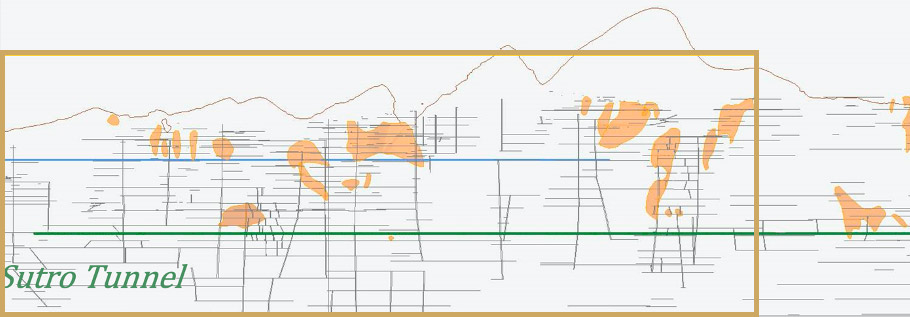
TONOGOLD CONTROLS 3 CONTIGUOUS KILOMETERS OF THE STRIKE
The Comstock Lode has a 5-kilometer strike length at Virginia City and Gold Hill, Nevada, about 40 km southeast of Reno.
Tonogold considers the Comstock Lode to be the portion of its holdings with the most exploration potential. Not because Tonogold expects to find high-grade bonanzas the old timers missed, but because of the tonnes of what to them was sub-economic material that they intentionally left behind as waste.
Thanks to immense changes in the economic circumstances of mining, rock that 19th century miners regarded as waste holds significant modern value.
Considering the nature of the Comstock’s epithermal mineralization and that the average breakeven head grade in the 19th century Comstock mines was around 50 g/t of gold equivalent (Au Eq) and never dipped below 30-35 g/t Au Eq, Tonogold believes that significant tonnages of gold and silver mineralization remain between 19th century breakeven head grades and the modern breakeven head grade for underground mining in Nevada of around 4-5 g/t Au Eq.
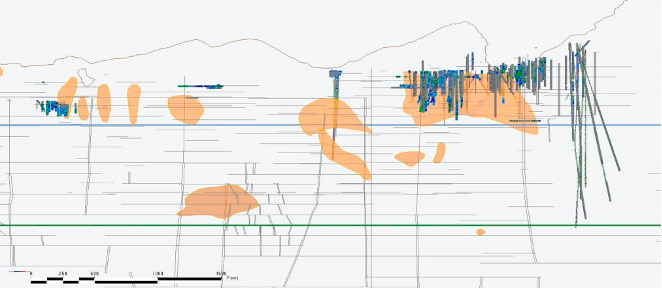
Prior drilling on the Comstock Lode.
To evaluate the opportunity in the absence of modern drill data, Tonogold uses a unique combination of historical, geologic, and economic analysis.
Much of Tonogold’s historical research and analysis is conducted by Comstock historian and author Gregory Crouch.
Working from the government-commissioned surveys and other maps of the Comstock mine workings—most of them more than a century old—Tonogold’s technical consultants at Mine Development Associates (MDA, a division of RESPEC) have developed an intricate 3D MineSight model of the Comstock Lode.
Constructed under the direction of MDA geologist Kiersten Briggs, the MineSight model of the Comstock Lode allows Tonogold to plot historical, geological, and modern drilling data with remarkable precision.
Tonogold’s 3D model of the Comstock Lode
3D MODEL OF THE COMSTOCK LODE
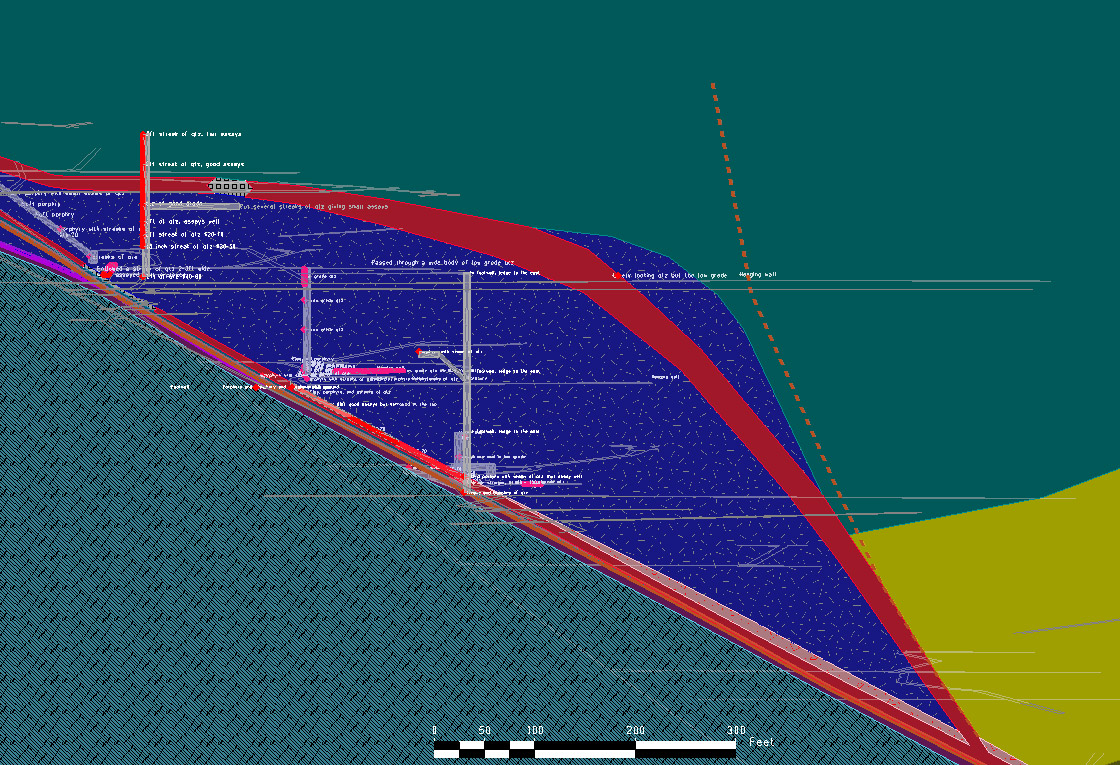
Looking north 15 east with a portion of the geology turned on: Metavolcanics in footwall and VC andesites in the hanging wall.
Tonogold has been using its combination of historical and geological knowledge to de-risk the drill exploration program Tonogold began in September 2020.
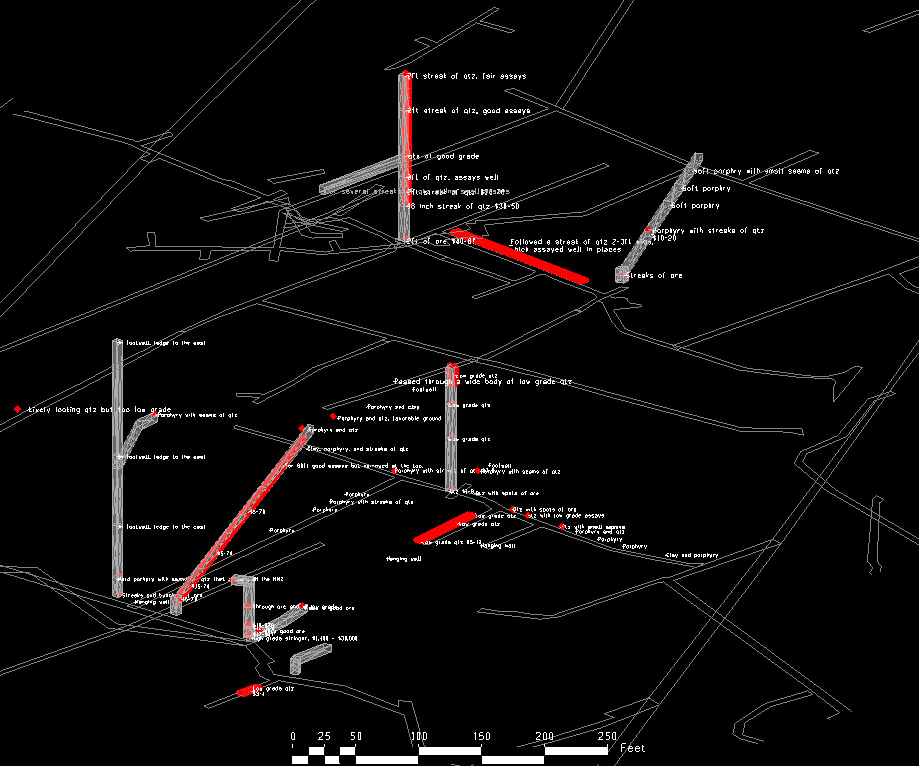
The Segregated Belcher section of the Comstock Lode with historical data plotted on the mine workings
Due to the plethora of historical records available, Tonogold knows that the Comstock Lode dips east at around 45 degrees, is open at a depth of 1,000 meters (as measured vertically below a datum point at the lode’s highest surface croppings in the Gould & Curry mine), and that the lode’s mineralized horizon is up to 200 m wide. Tonogold estimates the Comstock’s average true width at 50 meters.

The separate claims of the Comstock Lode delineated by the vertical lines, running from the Caledonia and the Overman to the Union Con. and the Sierra Nevada on this 1875 map.
Between 1859 and 1930, the Comstock companies mined approximately 9.4 million tonnes of rock at the impressive average head grade of 35 g/t Au and 726 g/t Ag.
AMONG MANY REASONS WE’RE CONFIDENT LARGE VOLUMES OF THAT MATERIAL EXISTS, THE OLD TIMERS TOLD US IT EXISTS
Here’s an excerpt from A History of the Comstock Silver Lode & Mines, published by famed Comstock journalist Dan de Quille (William Wright) in 1889, near the end of the Comstock’s 19th century heydays.

To follow a detailed analysis of what Wright would have considered “ore” and “waste” in 1889, click on the following.
THE GOLD IS STILL THERE
This, clipped from the July 22, 1893 issue of the Mining & Scientific Press. 10 of the 11 mines in that list fall inside Tonogold’s land package.
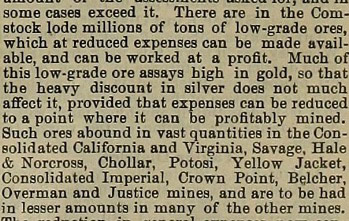
And in an article titled “The Comstock Mining Situation” clipped from the August 31, 1895 issue of the Mining & Scientific Press.

And two years later, in “Mining Share Market” in the September 25, 1897 issue of the Mining & Scientific Press. The hoped-for revival never happened.
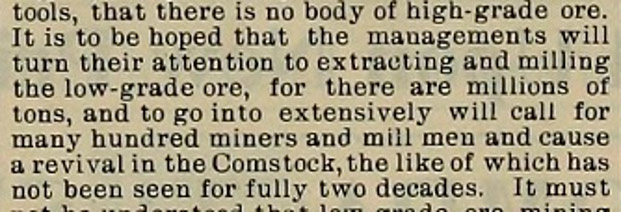
THEY LEFT THE GOLD IN PLACE
Intending to validate that theory, Tonogold began the modern drill testing of the Comstock Lode in September 2020.
To see the results of that drill exploration, see Tonogold’s Press Releases in the News section.



